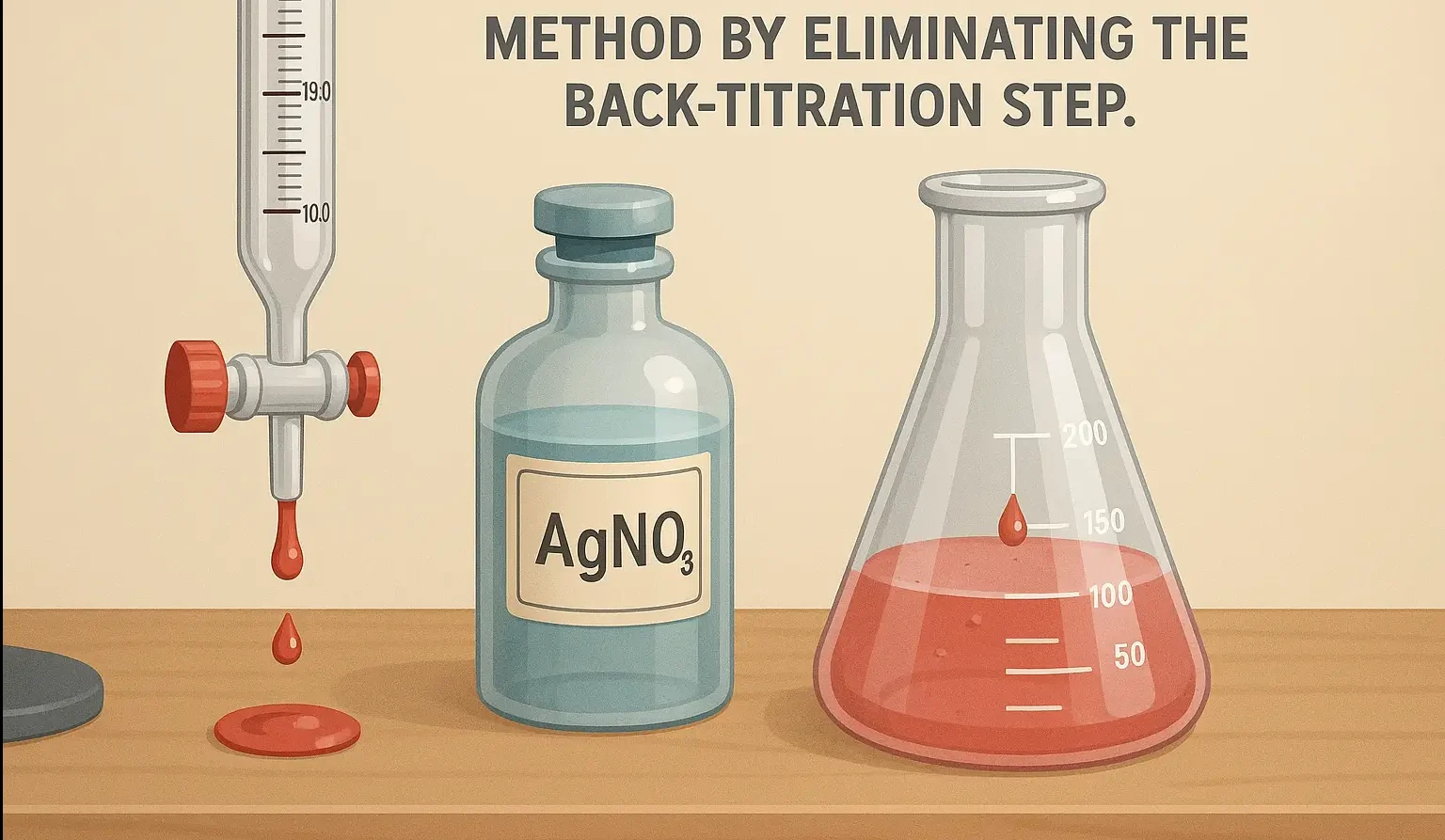Introduction to Modified Volhard’s Method:
- The Modified Volhard’s method, also called the “direct Volhard’s method,” simplifies the original Volhard’s method by eliminating the back-titration step.
- It combines the addition of excess silver nitrate and the titration with thiocyanate into a single step, making the procedure faster and more efficient.
Principle of Modified Volhard’s Method:
- Like the original method, this technique relies on the selective precipitation of halide ions with silver ions.
- The key difference is that the titration of unreacted silver ions with thiocyanate occurs simultaneously in one step, rather than separately.
This is a sample ad placement!
Procedure:
- Pipette a known volume of the halide-containing solution into an Erlenmeyer flask.
- Add nitric acid (HNO₃) to maintain an acidic pH and prevent the formation of silver hydroxide.
- Add ferric ammonium sulfate as the indicator (solution turns yellow/pale brown due to ferric ions).
- Prepare a burette containing a mixture of standardized silver nitrate and thiocyanate solutions. The ratio of AgNO₃ to SCN⁻ matches the ratio of halide to silver ions in the sample.
- Titrate the sample with the mixed titrant until a permanent red-brown color appears, indicating the endpoint.
Theory:
- The modified method simplifies the titration by combining both steps, reducing the time and potential for measurement errors.
- Halide ions react with silver ions, and any excess silver reacts immediately with thiocyanate present in the same titrant.
This is a sample ad placement!
Calculation:
Where:
-
$C_{X^-} = \frac{C_{\mathrm{AgNO_3}} \times V_{\mathrm{mixed\_titrant}}}{V_{\text{sample}}}$
- CX− = concentration of halide ions,
- CAgNO3 = concentration of AgNO₃ in the mixed titrant,
- Vmixed_titrant = volume of the mixed titrant used at the endpoint,
- V_sample = volume of the halide-containing sample.
This is a sample ad placement!
This arrangement provides a streamlined and clear explanation of the method while keeping it concise.
Thank you for reading from Firsthope's notes, don't forget to check YouTube videos!

